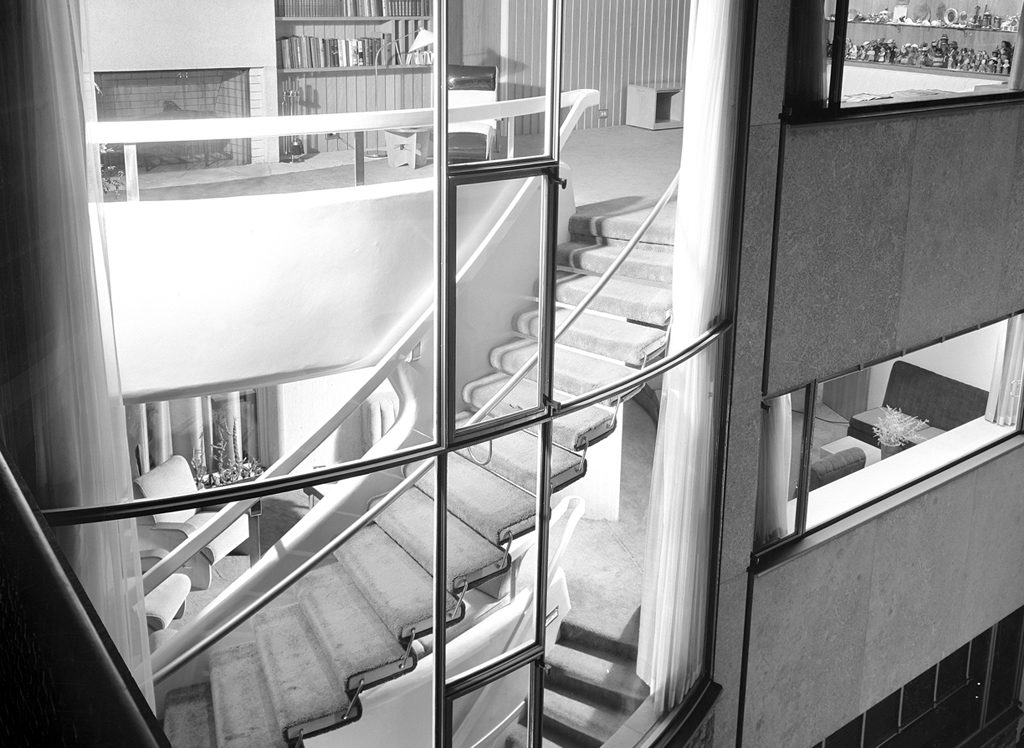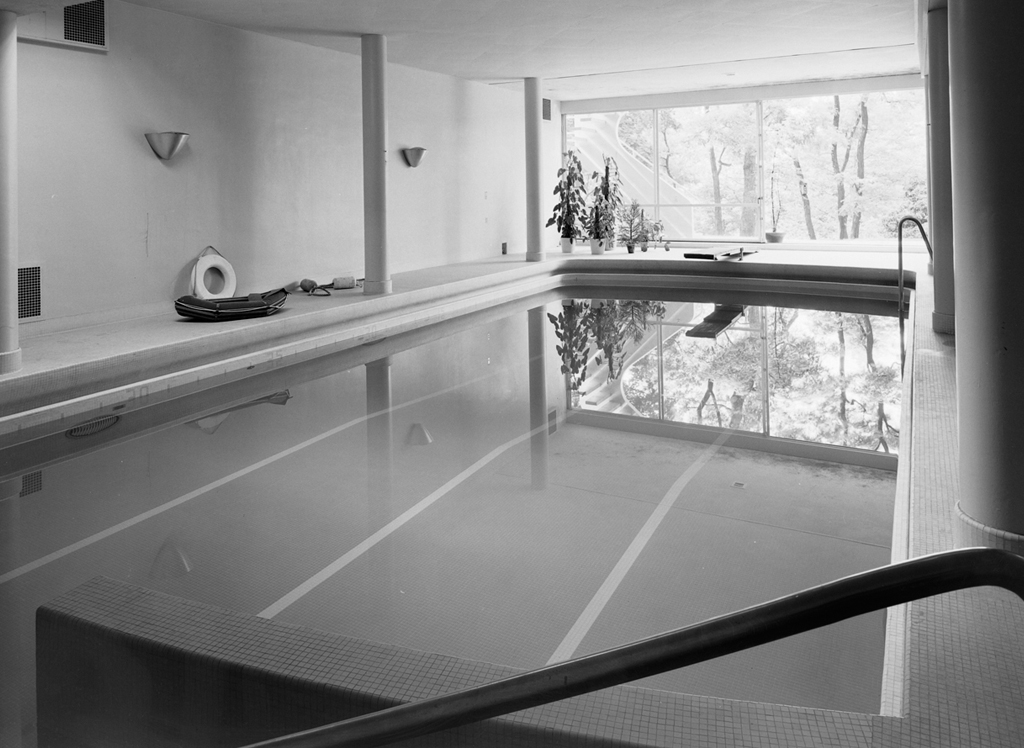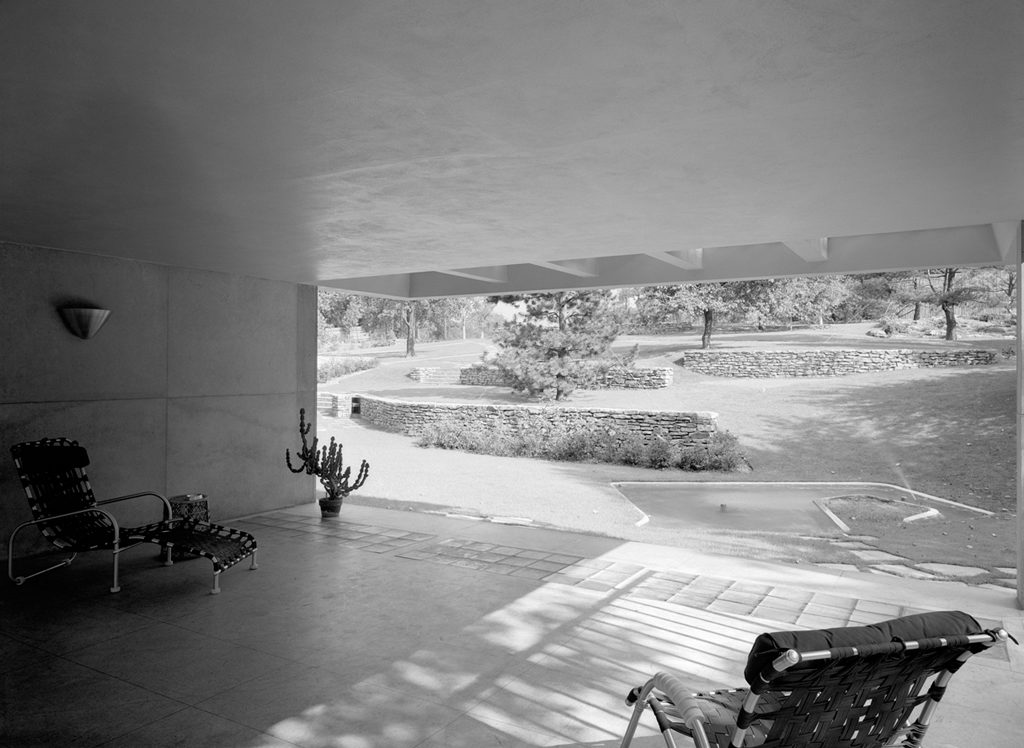“The Frank House is a culmination of the ideal of the complete environment long dreamed of in the European avante-garde and the Bauhaus, which Gropius founded in 1919 and where Breuer was one of the earliest and most gifted students. In Pittsburgh they realized their masterpiece of the integration of architecture, furnishings, and landscape.”
— Barry Bergdoll
Former Chief Curator, Architecture and Design, The Museum of Modern Art (MoMA)

The Most Important Movement in Architecture and Design
Every day, everywhere we go in our daily lives, we are surrounded by the legacy of an idea begun nearly a hundred years ago in Germany, formed in the imagination of an architect named Walter Gropius, in a school called the Bauhaus. Our public spaces, our schools, our office buildings and their interiors, the furnishings and designs in our homes, all of these things bathe us, visually and physically, in a movement that literally changed every aspect of what was to become modern culture. It was the most important movement in architecture and design in human history.
The movement begun at the Bauhaus swept aside old forms of design with a new generation of creative thinking based on truth and new materials: steel, concrete and new forms of glass. Modernism was more than a new aesthetic; it was a marriage of form and function that connected buildings and the people in them to the earth, air and sky in a way that had not been possible before. Today, the influence of modernism is so pervasive, so direct and so ubiquitous that it’s nearly invisible to the casual observer… unless there’s a place where one can step back, filter out the noise and be embraced by modernism in a pure and ideal form, on a uniquely human scale, in a setting as treasured and intimate as a grand family home. There is such a place. It’s nestled among the oaks and maples of Shadyside, a unique and historic Pittsburgh neighborhood that is a center of intellectual, cultural and family life in the city.
A Total Work of Art
The term “Total Work of Art,” applied to the Frank House, is more than a simple superlative. Gropius, Breuer and the Franks envisioned the home’s design as skillfully integrating all the requisite disciplines — structure, materials, furnishings and landscape.
The commitment to a total work gave Breuer responsibility for designing all the furniture and furnishings in the house, from major pieces to details such as door hardware, lighting, light switches and a whole range of novel devices. It would be the single most important commission of his career for inventing new furniture.
Breuer responded with a staggering number and variety of designs. Two thirds of the designs Breuer would create during his American years, including his best work, were created for the Frank House, and exist nowhere else. Hundreds of new designs were developed, using new materials and new ways of shaping and finishing wood; some incorporating Lucite, a polymer material that had been recently developed by DuPont.
This great wealth of architecture and design, both in quality and quantity, is one of the things that sets the Frank House apart from other well known houses. Its hundreds of unique pieces of furniture, designed by Breuer for the house, intact blueprints, hundreds of letters between the Franks and Gropius and Breuer, and other archives, are unmatched in their completeness and scope.

Largest and Most Significant
With four levels of living space, a twenty by forty foot indoor swimming pool and a rooftop dance floor, the Frank House was Gropius and Breuer’s largest and most important residence.
The main building includes a curved glass façade, five terraces, nine bedrooms and 13 bathrooms. The stonework of the exterior walls and the dramatic glass-block entry of this innovative house suggest a detailed and richly textured building. Inside, graceful curves prevail; walls are paneled with warm pearwood, English sycamore, and redwood, or are travertine or stone.
The great three-story window wall swells in the facade behind the circular stair which sweeps visitors from the ground floor entry and recreational area to the first-floor living area and then continues to rise to the family bedroom level. The sensuously curved cantilevered main stair is the first embodiment of all the cantilevered stairs of independent slab risers that Breuer would make a signature of his American work. The theme is echoed in a sculptural outside stair of concrete taking visitors from the front to the back garden via an open terrace, an alternative dramatic path through the house. Perception of the house includes both theatricality of approach and intimacy of scale. Effects are achieved through natural materials set in contrast with man-made products, through contrasts of light and heavy, closed and open, and through dramatic lighting and staging of movement on the wooded sloping site.
Green Design Ahead of Its Time
Every day, everywhere we go in our daily lives, we are surrounded by the legacy of an idea begun nearly a hundred years ago in Germany, formed in the imagination of an architect named Walter Gropius, in a school called the Bauhaus. Our public spaces, our schools, our office buildings and their interiors, the furnishings and designs in our homes, all of these things bathe us, visually and physically, in a movement that literally changed every aspect of what was to become modern culture. It was the most important movement in architecture and design in human history.
Even by today’s standards, the home’s electrical and mechanical systems are very advanced. The home’s green roofs are more than just environmentally sound; they support living lawns and contribute to remarkable thermal efficiency. The home uses a fraction of the energy used by buildings of similar size. Climate management is aided by innovative direct use of solar energy and the control systems, which have been compared to those of a state-of-the art manufacturing plant. Because of these innovative features, the house doesn’t need auxiliary heat until the outside temperature drops to the 40s. It features one of the first examples of central air conditioning, with the first electrostatic system for purifying air.
Because of this collaboration between the Franks and the architects, and because of the unparalleled support of the clients for this vision, the Frank House emerged as a Total Work of Art in a way that defines architectural excellence and uniquely expresses the Pittsburgh region’s historic tradition of technological innovation.

“A very exquisite balance of architectural proportions, textures and colorations with machine-age aesthetics.”
— Toshiko Mori
Former Chair, Department of Architecture, Harvard Graduate School of Design
Lovingly Preserved
Every day, everywhere we go in our daily lives, we are surrounded by the legacy of an idea begun nearly a hundred years ago in Germany, formed in the imagination of an architect named Walter Gropius, in a school called the Bauhaus. Our public spaces, our schools, our office buildings and their interiors, the furnishings and designs in our homes, all of these things bathe us, visually and physically, in a movement that literally changed every aspect of what was to become modern culture. It was the most important movement in architecture and design in human history.
Like Rudolph Schindler’s King’s Road House in Los Angeles, and Gropius’s own home in Lincoln, Massachusetts – the Frank House serves as a unique document of both the modernist movement and the aspirations and culture of American families from a time that is quickly receding.
Unique among similar residential projects is the wealth of authentic detail in the Frank House. Rarely, if ever, have historic designers on the level of Gropius and Breuer had such latitude in a family home to explore new directions and ideas and express the fullness of their genius.
Lovingly preserved by Alan I W Frank, this rich legacy is ready to become an important medium for educating, sharing and experiencing modernism as conceived by its original thinkers. Its structure is sound, its furnishings are virtually unchanged except for the effects of time, and its continuity with the original idea is completely unbroken. With preservation, the Frank House can serve as a pure and authentic statement for generations to come.
The Nation’s Crown Jewel
Scholars and critics who have visited the site are unanimous in their understanding of its importance as a masterpiece that must be preserved. J Carter Brown, director of the National Gallery of Art in Washington, and considered the country’s unofficial minister of culture, described the house as “The Nation’s Crown Jewel.” Toshiko Mori, former Chair of the Department of Architecture at Harvard University’s University’s Graduate School of Design, said the experience of visiting is “one of those rare occasions when you enter a house and it’s absolutely authentic. Mr. Frank preserved the house in its totality – equipment, furniture, fixtures, even original textiles and wall coverings. It’s all intact. It’s a very exquisite balance of architectural proportions, textures and colorations with machine-age aesthetics. Everything is very functional.”
Barry Bergdoll, Chief Curator of Architecture and Design at MoMA, who is using the house and its trove of correspondence as part of an extended study of Marcel Breuer, described the Frank House as “an exceptional historical document, as well as a major monument of American architectural art and architectural history.”

